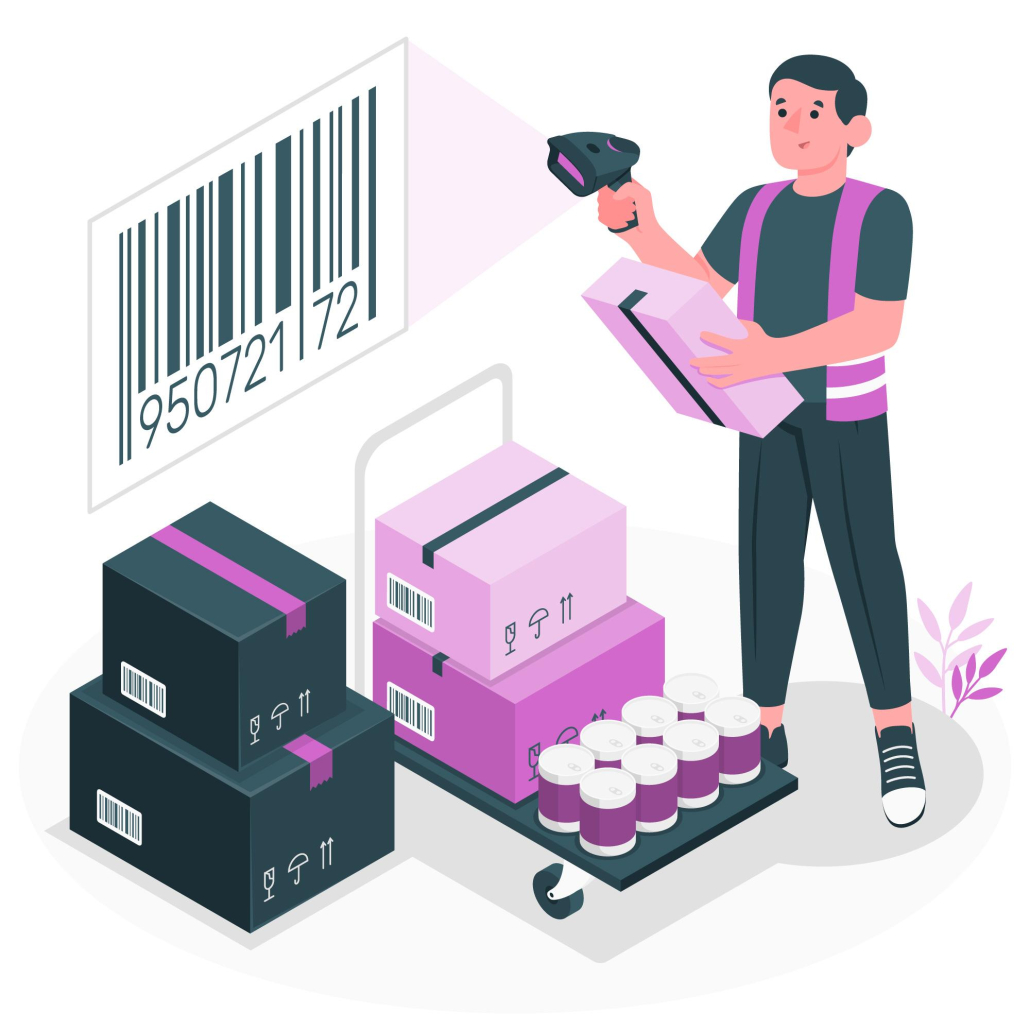Reduce Shipping Errors: Our Top 10 Tips
Ecommerce logistics can be a challenging endeavor, with shipping errors lurking around every corner. But fear not! We’ve assembled a comprehensive guide that unveils the art of error reduction in the ecommerce shipping realm. Discover our top 10 expert tips to streamline your shipping operations, enhance customer satisfaction, and ensure your parcels arrive at their destinations with precision and care. It’s time to master the art of shipping accuracy.
1. Streamline Your Packing Process
One of the fundamental pillars of error-free ecommerce shipping is to establish a standardized packing procedure. By creating a uniform process, you significantly reduce the chances of costly mistakes.
Start by developing clear guidelines for your packing team to follow, tailored to different product types.Implement checklists to ensure that each item is packed correctly, and no essential steps are missed. This not only boosts efficiency but also ensures that every customer receives their order in perfect condition, ultimately enhancing your reputation and customer satisfaction.
2. Use Quality Packaging Materials
Choosing the right packaging materials is paramount in safeguarding your products during transit and minimizing shipping errors. Invest in sturdy and suitable packaging materials that match the nature and fragility of your items. Strong boxes, bubble wrap, packing peanuts, and cushioning materials provide an added layer of protection, reducing the risk of damage in transit. Prioritizing quality packaging materials not only ensures your products reach customers in pristine condition but also minimizes costly returns and customer dissatisfaction, ultimately bolstering your ecommerce business’s reputation.
let’s consider a common ecommerce Product scenario: : Glassware (e.g., wine glasses, drinking glasses)
Recommended Packing Materials:
- Sturdy Boxes: Select strong, corrugated cardboard boxes that can withstand shipping handling. Choose sizes that snugly fit the glassware to prevent excessive movement within the box.
- Bubble Wrap: Wrap each glass individually with several layers of bubble wrap. Focus on covering the fragile areas, such as the stems and rims.
- Packing Paper or Tissue: Place crumpled packing paper or tissue paper inside each glass to provide additional cushioning.
- Dividers: Use cardboard dividers or specially designed cell boxes to keep glasses separate and prevent contact during transit.
- Sealing Tape: Securely seal the box with high-quality packing tape to ensure it stays closed during shipping.
- Fragile Labels: Clearly mark the boxes with “Fragile” labels to alert carriers to handle them with care.
3. Train Your Staff
Behind every successful ecommerce shipment is a well-trained team. To minimize shipping errors, it’s crucial to invest time in training your packing and shipping personnel. Make sure they understand the pivotal role they play in maintaining accuracy and customer satisfaction. Provide thorough training sessions that emphasize the importance of careful handling, accurate labeling, and following standardized packing procedures.
Additionally, continuous training and regular refresher courses can help keep your team updated on best practices and aware of the latest shipping industry trends, ensuring consistently smooth and error-free operations.
4. Implement Advanced Inventory Management
In the fast-paced world of ecommerce, advanced inventory management software is your secret weapon against overselling and shipping errors. These systems offer real-time visibility into your stock levels, allowing you to track inventory with precision. By automating stock updates as orders are placed and products are restocked, you minimize the risk of overselling items that are no longer in stock. This not only boosts efficiency but also ensures your customers receive accurate, timely shipments. Embracing modern inventory management technology is a proactive step toward error reduction and smoother ecommerce operations.
E.g,Boostmyshop myFulfillment – has Inventory management abilities that can dynamically track and update inventory as orders are full filled. You can even configure back order when your about to go out of stock.
Regularly Update Inventory:
The ecommerce landscape is dynamic, with products constantly moving in and out of your inventory. To maintain accuracy and minimize errors, conduct frequent inventory counts and updates. Regular audits ensure that your stock levels align with what’s reflected in your system. This proactive approach not only prevents overselling but also helps identify discrepancies early. By staying vigilant and keeping your inventory data up-to-date, you can enhance your order fulfillment accuracy and avoid the disappointment of informing customers that their desired items are out of stock, thus bolstering your ecommerce credibility and customer satisfaction.
5. Embrace Technology
By integrating bar-coding and RFID (Radio-Frequency Identification) technology into your inventory management system, you can streamline operations and significantly reduce human errors. Barcodes and RFID tags make it easy to track and manage inventory items with precision. They enable quick and accurate data capture, minimizing the risk of manual entry mistakes. This not only boosts efficiency but also enhances inventory accuracy, ensuring that your customers receive the correct products on time, every time, and fortifying your ecommerce business’s reputation for reliability.
6. Double-Check Shipping Addresses
The importance of accurate shipping addresses cannot be overstated. To prevent delivery issues arising from incorrect or incomplete information, always double-check shipping addresses for accuracy. A small mistake in the address can lead to significant delays or even lost packages. Implement a thorough address verification process to catch and rectify errors before shipping. This extra step not only reduces the risk of costly shipping errors but also ensures a smoother delivery process, ultimately enhancing customer satisfaction and trust in your ecommerce brand.
7. Carrier Selection and Communication
Choose reliable shipping carriers: Partner with reputable shipping carriers known for their reliability and track record. Select carriers that align with your shipping needs.
Establish clear communication channels: Maintain open lines of communication with your chosen carriers. Address any concerns or special requirements to ensure smooth operations.
Monitor carrier performance: Continuously monitor carrier performance, including delivery times and error rates. Address any issues promptly and hold carriers accountable.
Alternatively, you can select shipping solutions such as Sendcloud to provide multiple shipping options for your customers.
8. Package Tracking and Monitoring
Provide customers with tracking information: Offer customers real-time tracking information so they can monitor their shipments. Transparency builds trust and reduces customer inquiries.
Monitor package status in real-time: Use tracking systems to monitor package movements in real-time. Identify potential delays or issues and take proactive measures.
Proactively address delivery issues: Anticipate and address delivery issues before they become customer complaints. Proactive communication can resolve problems swiftly.
9. Returns and Refunds Process
Streamline returns procedures: Simplify your returns process to minimize errors and customer frustration. Clear return instructions and automation can help achieve this.
Automate refund processing: Automate refund processing to expedite customer reimbursements. This reduces the risk of errors in the refunding process.
Analyze return data for improvement: Analyze return data to identify trends and recurring issues. Use this information to make product or process improvements.
10. Customer Education and Expectations
Educate customers on shipping policies: Clearly communicate your shipping policies and procedures to customers. Educated customers are more likely to provide accurate information.
Set realistic delivery expectations: Be transparent about delivery times and set realistic expectations. Under-promising and over-delivering can lead to satisfied customers.
Provide exceptional customer service: Offer exceptional customer service throughout the shipping process. Quick responses to inquiries and issues can turn a potentially ne
Reducing shipping errors is not just a goal; it’s a necessity
Ensuring the accuracy and reliability of your shipping process is paramount for customer satisfaction, cost-effectiveness, and the reputation of your online business. Here’s a quick recap of the key strategies covered in our top 10 tips:
- Standardize Packing Procedures: Develop a consistent process and use checklists.
- Use Quality Packaging Materials: Invest in sturdy materials to protect items.
- Train Your Staff: Ensure your team understands the importance of accuracy.
- Implement Advanced Order/ Inventory Management: Utilize software for real-time stock tracking.
- Regularly Update Inventory: Conduct frequent audits to maintain accuracy.
- Embrace Technology: Employ bar coding and RFID for error reduction.
- Double-Check Shipping Addresses: Verify addresses to prevent delivery issues.
- Clearly communicate with customers
By implementing these strategies, you’ll not only reduce shipping errors but also enhance customer trust, streamline your operations, and boost your ecommerce business’s overall success. Remember, in the world of online retail, error reduction isn’t just a best practice; it’s the foundation of your brand’s reliability and customer satisfaction.






